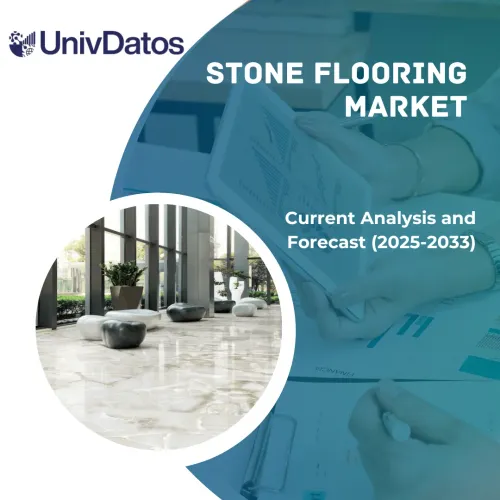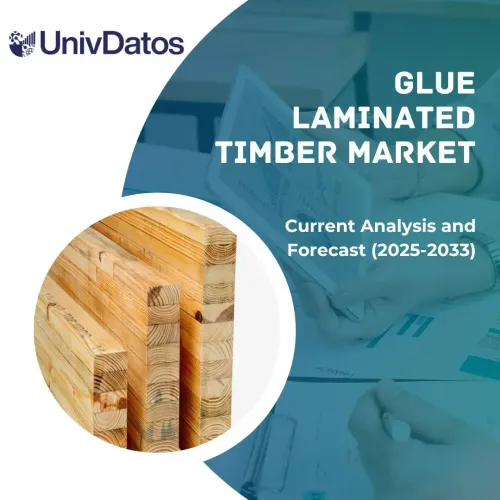- Home
- About Us
- Industry
- Services
- Reading
- Contact Us
Glue Laminated Timber Market: Current Analysis and Forecast (2025-2033)
Emphasis on End-Use (Floor Beams, Window and Door Header, Trusses and Supporting Columns, Roof Beams, and Others); Application (Residential, Commercial, and Others); and Region/Country
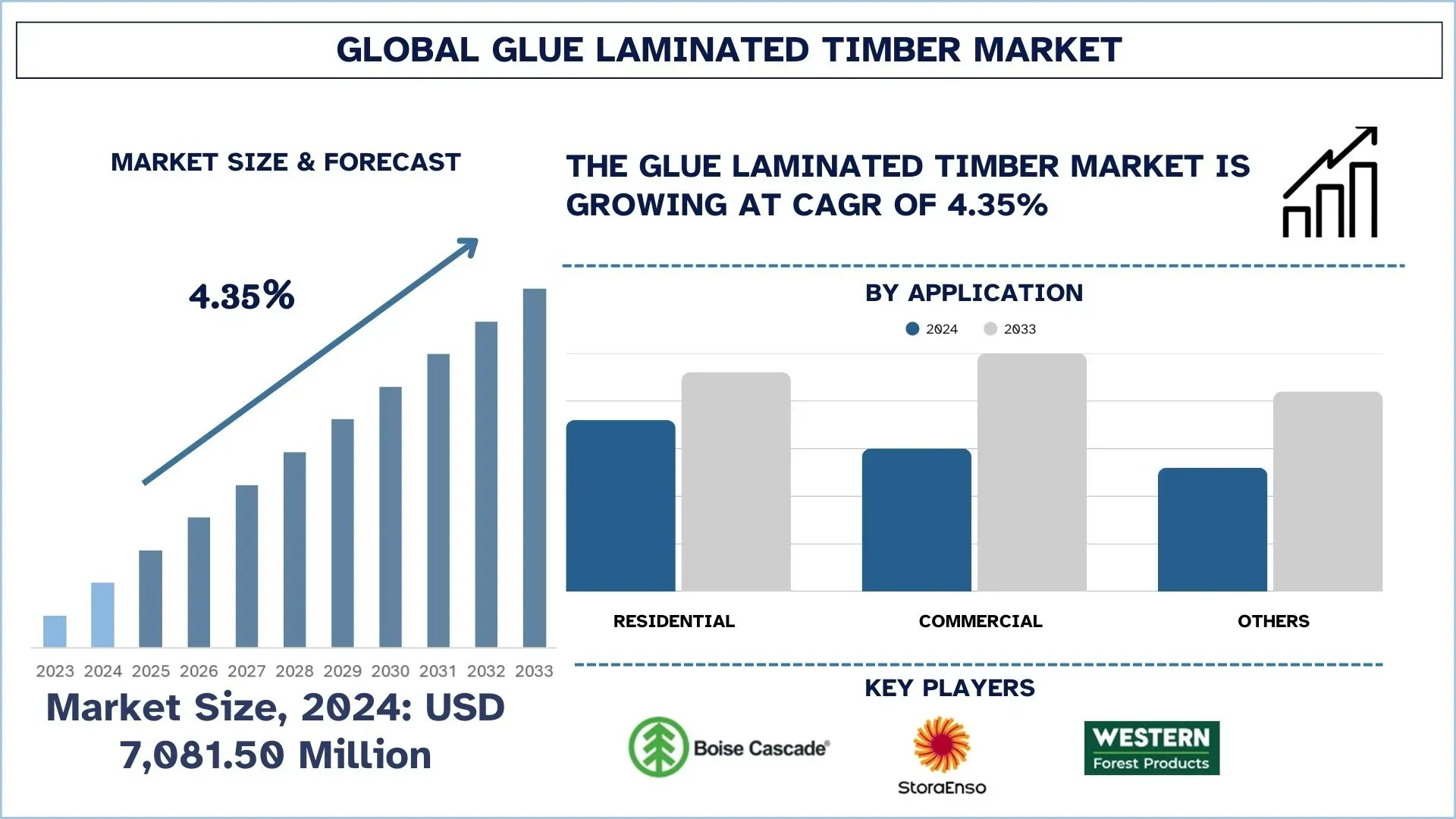
Global Glue Laminated Timber Market Size & Forecast
The Global Glue-Laminated Timber Market was valued at USD 7,081.50 million in 2024 and is expected to grow at a strong CAGR of around 4.35% during the forecast period (2025-2033F), driven by increasing demand for sustainable construction materials and the shift toward green building practices.
Glue Laminated Timber Market Analysis
Glue-laminated timber (Glulam) is a high-tech engineered wood product developed by gluing several layers of dimensioned timber using high-quality and moisture-resistant compounds to structure powerful and diverse structural components. Glulam is known to be an incredibly powerful material with design flexibility and aestheticism that has been extensively applied in beams, columns, trusses, and arches in residential, commercial, and infrastructure construction. The glulam market is growing due to increasing demand for eco-friendly building materials, increasing use of green building certifications, such as LEED and BREEAM, and government policies that encourage low-carbon building construction. Moreover, its high strength, flexibility, and capacity to bear heavy spans make it very appealing to residential, commercial, and infrastructure projects.
Global Glue Laminated Timber Market Trends
This section discusses the key market trends that are influencing the various segments of the global glue-laminated timber market, as found by our team of research experts.
Automation and CNC machining are improving design accuracy and cost efficiency
The application of automation and CNC machining is an emerging trend in the glue-laminated timber (Glulam) market, which is enhancing design precision and saving costs in a significant way. The sophisticated CNC machines also allow one to cut, shape, and join Glulam products with precision, and the architects and assist building constructors to achieve complex and customized designs with minimal waste. Automation also makes production processes leaner, cheaper, and scalable, allowing Glulam to compete better with traditional materials. Technology also reduces the time taken to complete a project through prefabrication and modular construction. All these benefits of using automation and CNC machining in the glulam industry are driving the market growth.
Glue Laminated Timber Industry Segmentation
This section provides an analysis of the key trends in each segment of the global glue-laminated timber market report, along with forecasts at the global, regional, and country levels for 2025-2033.
The Roof Beams Market Dominates the Global Glue-Laminated Timber Market
Based on the end-use category, the market is categorized into floor beams, window and door headers, trusses and supporting columns, roof beams, and others. Among these, roof beams currently hold the maximum market share in the Glue Laminated Timber market, as these are commonly used in residential and commercial buildings because of their capacity to cover long distances, to support heavy weights, and even to improve architectural/building beauty. However, the trusses and backing columns section is expected to experience the most significant rise in the future due to the increased use of mass timber in mid- to high-rise constructions and contemporary architectural endeavors that require the use of solid yet lightweight building materials.
The Residential Segment Dominates the Global Glue Laminated Timber Market.
Based on the application category, the market is categorized into residential, commercial, and others. Among these, the residential segment currently holds the maximum market share in the Glue Laminated Timber market, as glulam is widely applied as a beam, a header, or a roofing in the residence because of its strength, cost-effectiveness, and beauty. Its dominance has been further consolidated by the mass movement towards sustainable housing and materials that are environmentally friendly. However, the commercial segment is expected to grow the fastest due to the rising use of mass timber in commercial offices, hotels, educational institutions, and large community buildings.
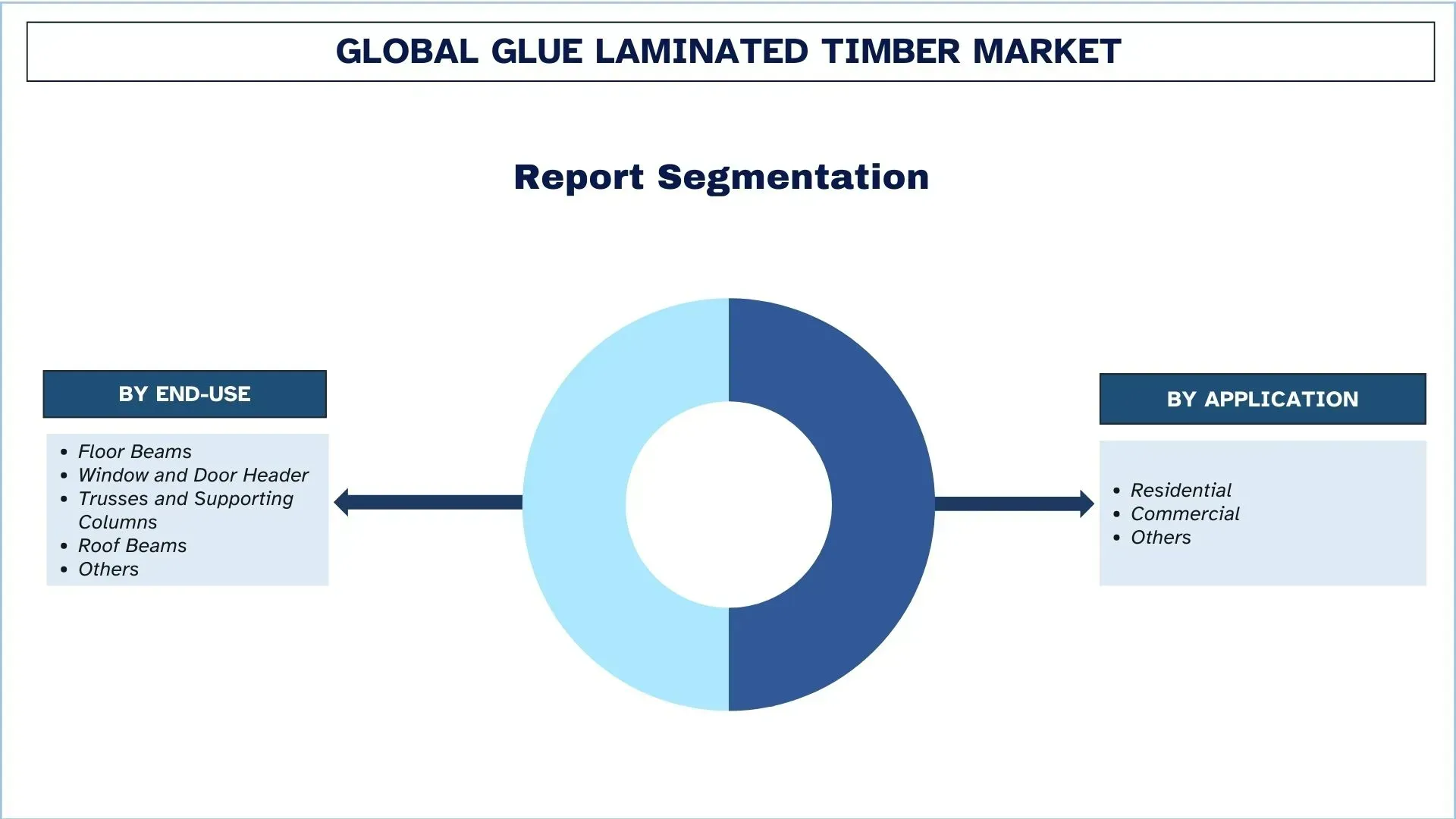
Europe holds the largest market share in the global Glue Laminated Timber market
The largest market share of the glue-laminated timber (Glulam) market belonged to Europe, which has a long history of timber building, a well-developed manufacturing platform, and is highly driven by its regulatory system to adopt sustainable construction methods. Germany, Austria, and the Nordic countries have been leaders in engineered wood products, owing to their rich forest cover and sophisticated production technologies. The stringent environmental policies and the high use of green certification systems such as BREEAM and LEED have also increased the use of Glulam in the region. Also, the rising investments in government infrastructure, business ventures, and environmentally friendly accommodation have made Europe the world leader in the use and development of Glulam.
Germany held a Dominant share of the Europe Glue Laminated Timber Market in 2024
Germany occupied a significant market share of the European Glulam market, due to its high-technology timber engineering sector, the powerful construction sector, and a focus on sustainable construction. The nation is endowed with great forest resources, a well-trained workforce, and production plants that are state-of-the-art, which facilitate the mass production of the Glulam products. There is also a strong demand for Glulam in residential, commercial, and government infrastructure projects, which has strengthened Germany's market leadership.
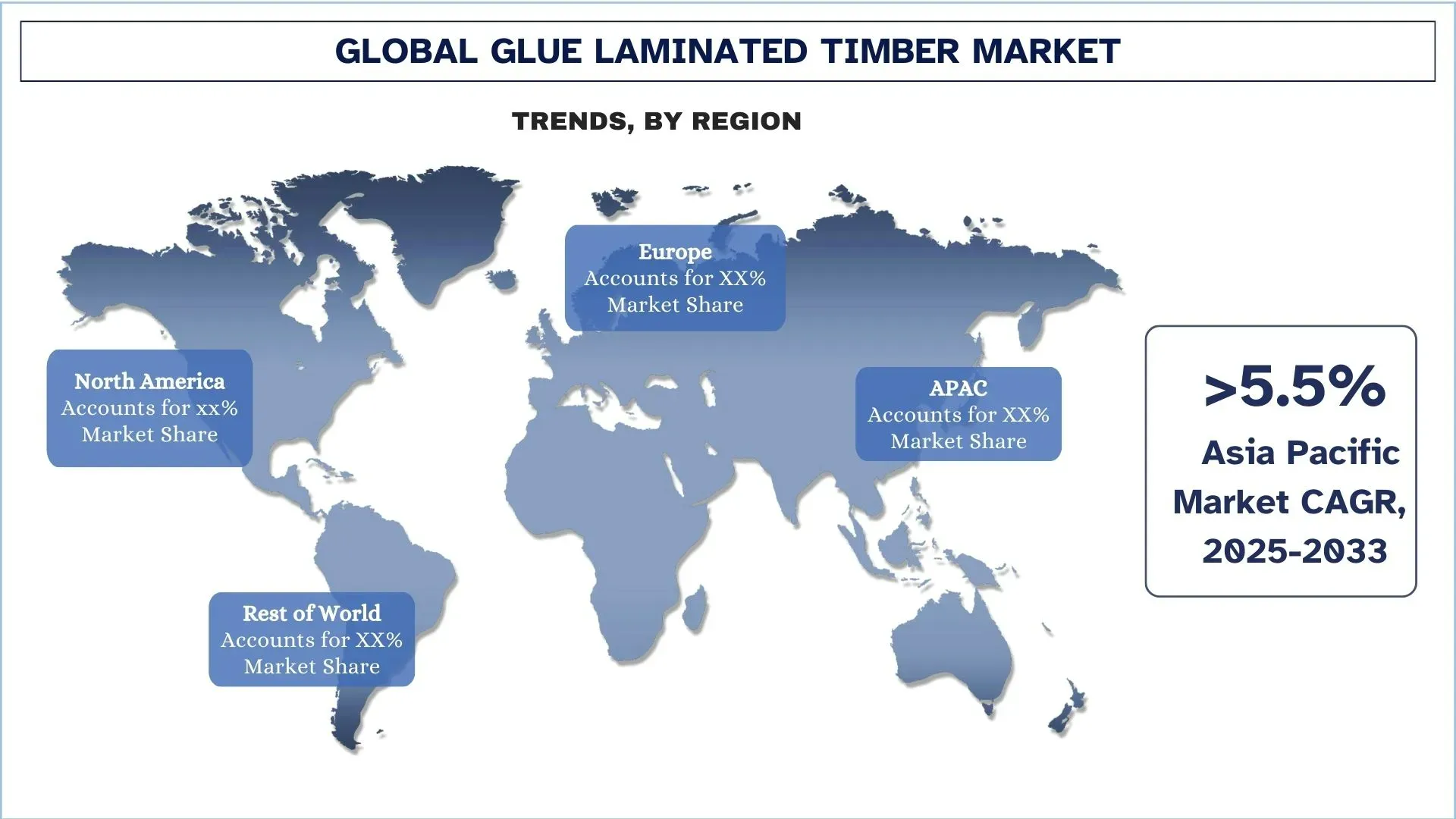
Glue Laminated Timber Industry Competitive Landscape
The global glue-laminated timber market is competitive, with several global and international market players. The key players are adopting different growth strategies to enhance their market presence, such as partnerships, agreements, collaborations, geographical expansions, and mergers and acquisitions.
Top Glue Laminated Timber Market Companies
Some of the major players in the market include Boise Cascade, Western Forest Products, Stora Enso, Mercer Mass Timber (Mercer International), Canfor Corporation, Mayr-Melnhof Holz Holding AG, EcoCurves (Jagram Group), Timberlink Australia Pty Ltd., WIEHAG Holding GmbH, and James Jones & Sons Limited.
Recent Developments in the Glue Laminated Timber Market
In May 2024, Star Equity Holdings’ acquisition of Timber Technologies was announced as a strategic step to strengthen its presence in the glue-laminated timber (Glulam) market. Through this acquisition, advanced manufacturing capabilities and expertise in engineered wood products are expected to be integrated, enabling broader market reach and supporting the rising demand for sustainable construction solutions.
In June 2023, the acquisition of Structurlam Mass Timber Corporation was successfully completed by Mercer Mass Timber, resulting in the integration of its facilities in Arkansas and British Columbia under the Mercer brand. Through this move, additional Glulam production capacity and advanced technical expertise were gained, strengthening the company’s presence in the North American mass timber market.
Global Glue Laminated Timber Market Report Coverage
Report Attribute | Details |
Base year | 2024 |
Forecast period | 2025-2033 |
Growth momentum | Accelerate at a CAGR of 4.35% |
Market size 2024 | USD 7,081.50 million |
Regional analysis | North America, Europe, APAC, Rest of the World |
Major contributing region | The Asia-Pacific region is expected to dominate the market during the forecast period. |
Key countries covered | U.S., Canada, Germany, U.K., Spain, Italy, France, China, Japan, and India. |
Companies profiled | Boise Cascade, Western Forest Products, Stora Enso, Mercer Mass Timber (Mercer International), Canfor Corporation, Mayr-Melnhof Holz Holding AG, EcoCurves (Jagram Group), Timberlink Australia Pty Ltd., WIEHAG Holding GmbH, and James Jones & Sons Limited. |
Report Scope | Market Trends, Drivers, and Restraints; Revenue Estimation and Forecast; Segmentation Analysis; Demand and Supply Side Analysis; Competitive Landscape; Company Profiling |
Segments Covered | By End-Use, By Application, and By Region/Country |
Reasons to Buy the Glue Laminated Timber Market Report:
The study includes market sizing and forecasting analysis confirmed by authenticated key industry experts.
The report briefly reviews overall industry performance at a glance.
The report covers an in-depth analysis of prominent industry peers, primarily focusing on key business financials, type portfolios, expansion strategies, and recent developments.
Detailed examination of drivers, restraints, key trends, and opportunities prevailing in the industry.
The study comprehensively covers the market across different segments.
Deep dive regional level analysis of the industry.
Customization Options:
The global Glue Laminated Timber market can further be customized as per the requirements or any other market segment. Besides this, UnivDatos understands that you may have your own business needs; hence, feel free to contact us to get a report that completely suits your requirements.
Table of Content
Research Methodology for the Global Glue Laminated Timber Market Analysis (2023-2033)
We analyzed the historical market, estimated the current market, and forecasted the future market of the global glue-laminated timber market to assess its application in major regions worldwide. We conducted exhaustive secondary research to gather historical market data and estimate the current market size. To validate these insights, we carefully reviewed numerous findings and assumptions. Additionally, we conducted in-depth primary interviews with industry experts across the glue-laminated timber value chain. After validating market figures through these interviews, we used both top-down and bottom-up approaches to forecast the overall market size. We then employed market breakdown and data triangulation methods to estimate and analyze the market size of industry segments and sub-segments.
Market Engineering
We employed the data triangulation technique to finalize the overall market estimation and derive precise statistical numbers for each segment and sub-segment of the global glue-laminated timber market. We split the data into several segments and sub-segments by analyzing various parameters and trends, including end-use, application, and regions within the global glue-laminated timber market.
The Main Objective of the Global Glue Laminated Timber Market Study
The study identifies current and future trends in the global glue-laminated timber market, providing strategic insights for investors. It highlights regional market attractiveness, enabling industry participants to tap into untapped markets and gain a first-mover advantage. Other quantitative goals of the studies include:
Market Size Analysis: Assess the current and forecast market size of the global glue-laminated timber market and its segments in terms of value (USD).
Glue Laminated Timber Market Segmentation: Segments in the study include areas of end-use, application, and region.
Regulatory Framework & Value Chain Analysis: Examine the regulatory framework, value chain, customer behavior, and competitive landscape of the glue-laminated timber
Regional Analysis: Conduct a detailed regional analysis for key areas such as Asia Pacific, Europe, North America, and the Rest of the World.
Company Profiles & Growth Strategies: Company profiles of the glue-laminated timber market and the growth strategies adopted by the market players to sustain the fast-growing market.
Frequently Asked Questions FAQs
Q1: What is the global glue-laminated timber market’s current market size and growth potential?
As of 2024, the global glue-laminated timber (Glulam) market is valued at USD 7,081.50 million. The market is projected to grow at a CAGR of 4.35% from 2025 to 2033, driven by increasing demand for sustainable building materials and the rising use of engineered timber in residential, commercial, and infrastructure projects
Q2: Which segment has the largest share of the global glue-laminated timber market by end-use category?
The roof beams segment currently holds the largest share of the global glue-laminated timber market, owing to its widespread application in residential, commercial, and public buildings that require long-span structural support and aesthetic flexibility.
Q3: What are the driving factors for the growth of the global glue-laminated timber market?
Top growth drivers of the glue-laminated timber market include:
• Rising demand for sustainable and eco-friendly construction materials.
• Increasing adoption of green building certifications such as LEED and BREEAM.
• Growing infrastructure investments and urban development projects worldwide.
Q4: What are the emerging technologies and trends in the global glue-laminated timber market?
Emerging trends in the glue-laminated timber market include:
• Adoption of bio-based adhesives to minimize chemical emissions.
• Use of automation and CNC machining to enhance design precision and production efficiency.
Q5: What are the key challenges in the global glue-laminated timber market?
Key challenges in the glue-laminated timber market include:
• High initial costs compared to conventional construction materials like steel and concrete.
• Fluctuations in timber supply and raw material prices, which can affect production and pricing.
Q6: Which region dominates the global glue-laminated timber market?
Europe currently dominates the global glue-laminated timber market, driven by strong adoption of sustainable construction practices, supportive regulations, and established engineered wood manufacturing infrastructure.
Q7: Who are the key competitors in the global glue-laminated timber market?
Top players in the glue-laminated timber industry include:
• Boise Cascade
• Western Forest Products
• Stora Enso
• Mercer Mass Timber (Mercer International)
• Canfor Corporation
• Mayr-Melnhof Holz Holding AG
• EcoCurves (Jagram Group)
• Timberlink Australia Pty Ltd.
• WIEHAG Holding GmbH
• James Jones & Sons Limited
Q8: What are the key investment opportunities in the global glue-laminated timber market?
High-growth opportunities exist in emerging regions, hybrid structures, prefabricated solutions, and eco-friendly adhesives driven by sustainable construction demand.
Q9: How is the demand for Glue Laminated Timber expected to evolve across different regions and applications?
Demand is growing in Europe, North America, and Asia-Pacific, with residential leading adoption and commercial/public infrastructure applications expected to expand.
Related Reports
Customers who bought this item also bought

